Tick Anatomy 101
 Ticks themselves are just as diverse as the diseases they carry. They live all over the world, and there are as many as 850 total species, divided roughly into two categories — hard and soft. A hard tick has a shield-like plate called a scutum that covers part of its back. If you look at a hard tick from top down, you can also see its capitulum, which looks like a “head”.
Ticks themselves are just as diverse as the diseases they carry. They live all over the world, and there are as many as 850 total species, divided roughly into two categories — hard and soft. A hard tick has a shield-like plate called a scutum that covers part of its back. If you look at a hard tick from top down, you can also see its capitulum, which looks like a “head”.
Soft ticks, on the other hand, don’t have a scutum, and the only parts of it you can see when you look at it from above are its back and legs. Many hard tick species also have festoons, which are bumpy ridges along the back part of the tick. These are frequently used to help identify the species of tick. [ Check out this Guide to Identifying Ticks ]
Regardless of whether they’re hard or soft, all species of ticks have a few things in common. Everything about them, from their swollen appearance to their ability to spread disease, comes from their need for blood. In this article, we’ll explore how ticks retrieve blood from their human hosts, as well as how they live, travel and reproduce.
Many people group ticks into the same category as fleas and mosquitoes -—insects that suck blood. However, ticks are really arachnids. Adult insects have three pairs of legs, and their bodies are made up of three segments: the head, the thorax and the abdomen. Arachnids, on the other hand, have four pairs of legs. Spiders are also arachnids, but ticks aren’t spiders. Spiders’ bodies have two segments, the cephalothorax and the abdomen, while ticks’ bodies aren’t segmented in any way.
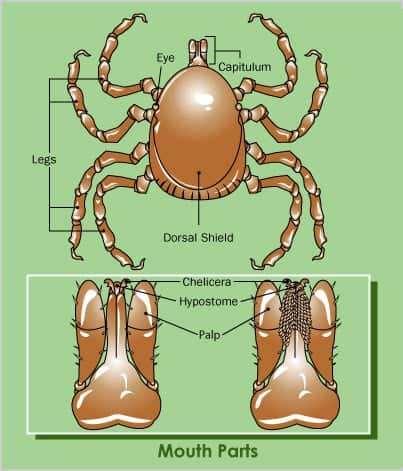
A tick’s body is small and relatively flat, so it’s easy for it to attach itself to a host and eat its fill before the host notices. This is particularly true for immature ticks, which can be smaller than the period at the end of a sentence. Even hungry adult ticks are often smaller than sesame seeds. Some ticks have also adapted to blend in to their hosts’ bodies.
One example is the exotic tick (Aponomma komodoense), which feeds exclusively on komodo dragons and is almost indistinguishable from a komodo dragon’s scale. Many ticks have to stay in place for a day or more to finish a meal, so the ability to go unnoticed is central to its survival.
Adult ticks have eight legs, each of which is covered in short, spiny hairs and has a tiny claw at the end. These spines and claws have two main purposes. They help ticks grasp blades of grass, leaves, branches and other vegetation. They also allow ticks to grasp their hosts.
Ticks use their mouthparts to pierce their hosts’ skin and extract blood. These mouth-parts can vary from species to species, but in general, from the outside to the inside, a tick’s mouth includes:
- Two palps, which move out of the way during feeding and don’t pierce the host’s skin.
- Two chelicerae, which cut through the host’s skin.
- One barbed, needle-like hypostome.
 Hard and soft ticks both have these mouth-parts, although you can only see them on a soft tick if you look at its underside.
Hard and soft ticks both have these mouth-parts, although you can only see them on a soft tick if you look at its underside.
The barbs on the hypostome are like the barbs on a fishhook. They point back toward the tick, making it difficult to remove the tick without damaging the skin. Some ticks secrete a cement-like substance with their saliva, which dissolves when the tick is ready to drop off of its host. This substance can make it even harder to remove the feeding tick. The saliva also keeps the host’s blood from clotting while the tick eats. But unlike a flea’s saliva, it doesn’t usually include compounds that cause itching and swelling.
As a tick eats, its body, or idiosoma, expands, although the amount of expansion varies. The scutum of a male hard tick covers much of its back, so its body can’t stretch to hold a lot of blood. Soft ticks don’t have scutums to get in the way of feeding, but they don’t require an immense store of blood to lay eggs, so they don’t swell as much as hard ticks do. Female hard ticks swell immensely as they store the blood they need to lay their eggs.
How do ticks breathe?
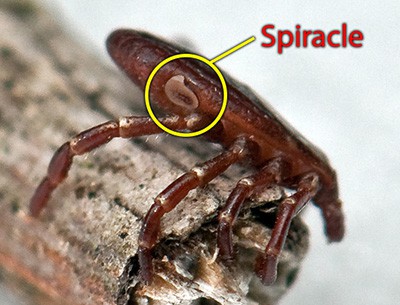
Like many arthropods, ticks breathe air through tiny openings along their body called “spiracles.” Ticks are famous for surviving periods underwater because they have a reduced need for oxygen compared to other creatures. A tick breathes between one and 15 times an hour.
The reason solutions such as alcohol and nail polish work in removing ticks is because they are irritants, not because the tick becomes suffocated. Despite their effectiveness, it is not recommended to use these products in the removal of ticks due to the chance that the arthropod regurgitates its saliva and gut contents into the bloodstream of the host. This can increase the risk of disease.
How do ticks transmit disease?
Ticks transmit pathogens that cause disease through the process of feeding. Depending on the tick species and its stage of life, preparing to feed can take from 10 minutes to 2 hours or longer. When the tick finds a feeding spot it likes, it grasps the skin and cuts into the surface using its chelicerae. The tick then inserts its barbed feeding tube (hypostome), which has a groove along it to draw up the blood.
Many species also secrete a cement-like substance (aptly called ‘attachment cement‘) which is produced in their salivary glands which hardens very quickly, helping to keep them firmly attached during the meal. Removing a tick before it has finished forming its cement stronghold should be quite easy; however, considerable force may be required to remove a tick after the cement formation is completed.
Ticks also tend to secrete small amounts of saliva with anesthetic properties so that the host animal (or person) doesn’t feel the tick attaching itself. If the tick is in a sheltered or hard to see area of the body, it can go unnoticed for hours or even days.
The speed of which a tick feeds varies depending upon the species of tick. For example, a Lone Star tick tends to begin feeding quite quickly, while a Blacklegged “Deer” tick will suck the blood slowly for several days. If the host animal has a bloodborne infection, the tick will ingest the pathogens with the blood and inevitably spread it to a future host. Small amounts of saliva from the tick may also enter the skin of the host animal during the feeding process. If the tick contains a pathogen, the organism may be transmitted to the host animal in this way.
After feeding, most ticks will drop off and prepare for the next life stage. At its next feeding, it can then transmit an acquired disease to the new host.
Do ticks have a brain??
This is a somewhat common question, actually!! Ticks don’t have a centralized “brain” as we mammals do. In fact, their “brain” (actually called the synganglion) is located essentially just under their scutum (the “shield” that we see on top of their bodies, near the mouth), which is intertwined directly with the tick’s abdominal nerve cord and thus, it’s almost like their heart and gut are connected as one. Weird and creepy, yes. Haha. Due to their design, they also don’t have lungs either, but rather any oxygen that is brought into the body (via spiracles – kind of like gills on their sides – or through their mouthparts) is immediately disseminated throughout the body.



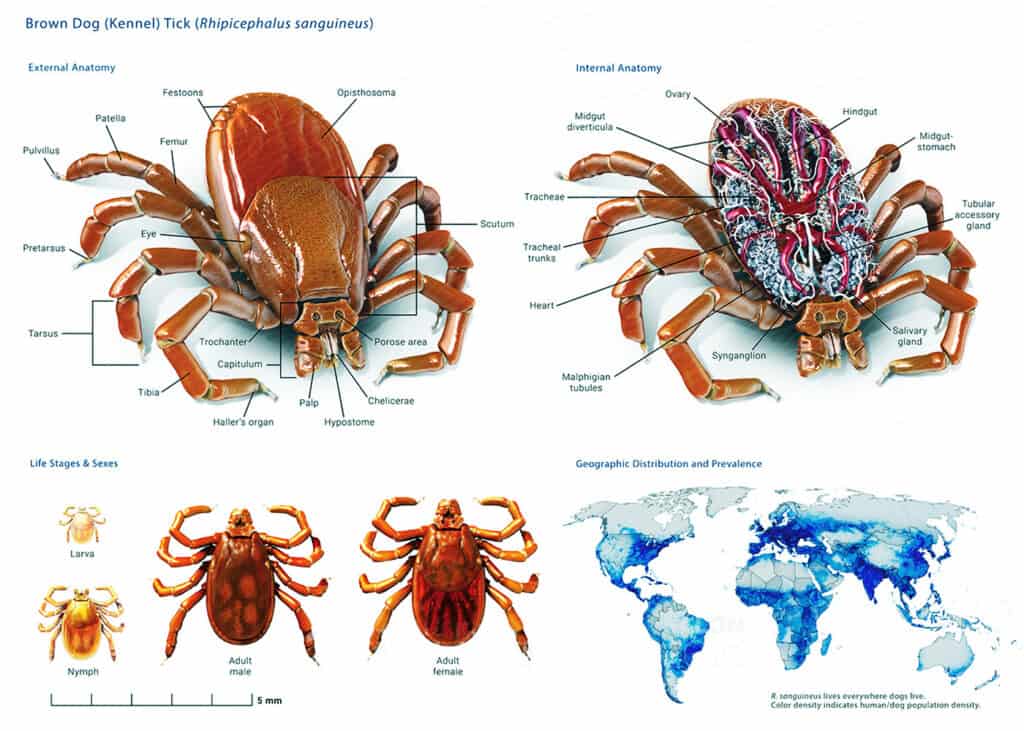
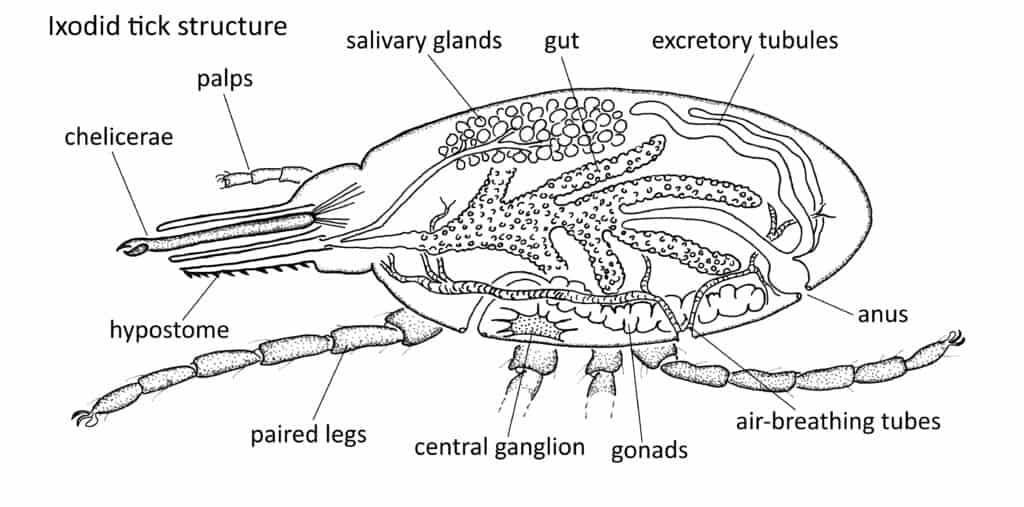
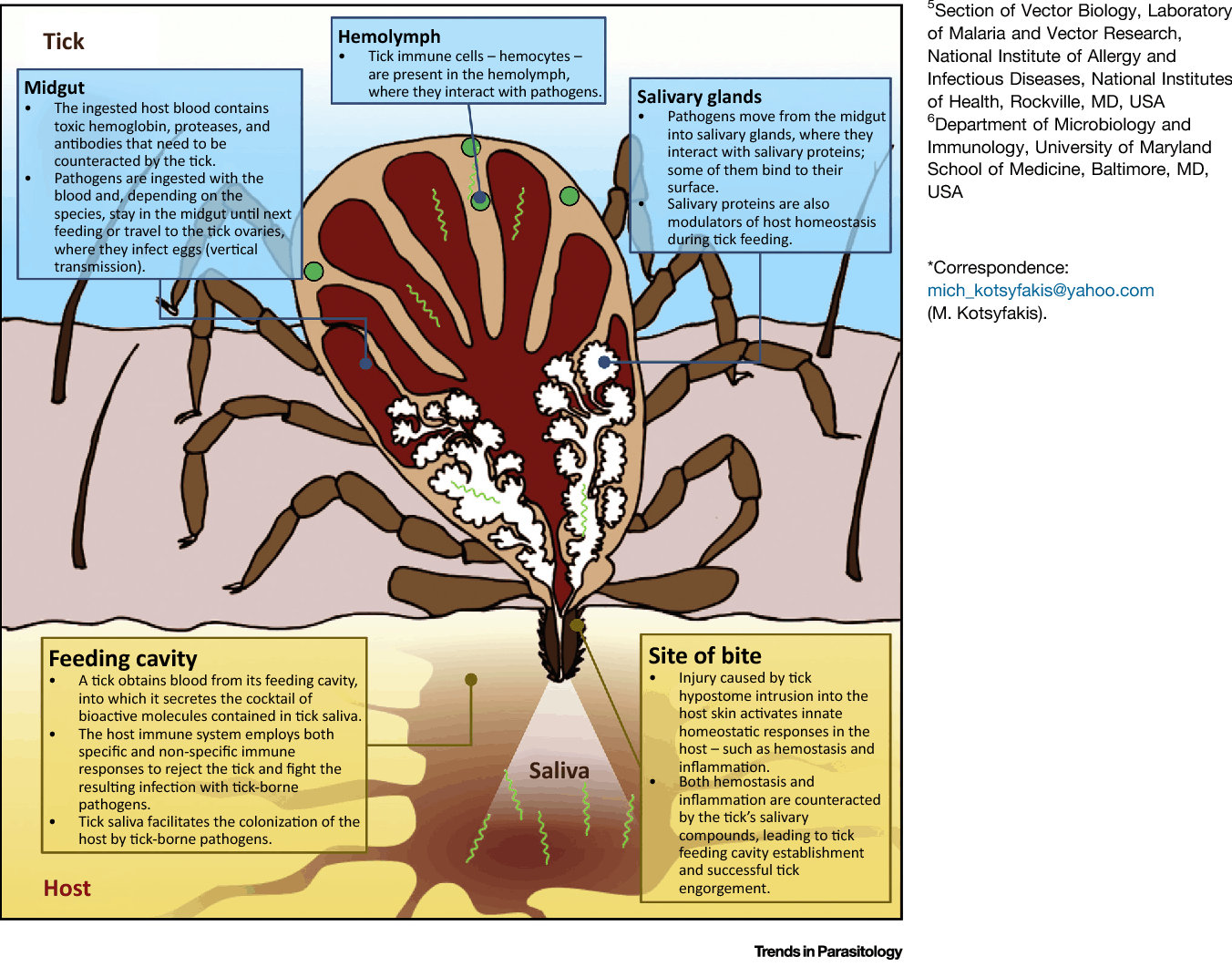
I have a question what does a black tick look like when it first attaches itself to human skin. Can a person squeeze a hard tick to kill it. What does a black ticks body look like inside before it fills up with blood from feeding. Are black ticks legs visible to the human eye
Many ticks that have been feeding appear “black” and can easily be squeezed with a finger or fingernail. Ticks are definitely visible to the human eye, as are their mouthparts and legs.
If alcohol can cause a tick to regurgitate, can it be problematic for pathogen testing to place them directly into a 70% ethanol solution upon collection?
Great question! No, placing a tick in alcohol does NOT actually prevent a tick from being tested for Lyme disease. The test looks for evidence of the Lyme spirochetes; whether active or not.
On a side note… Alcohol (or any substance that covers their breathing openings) may trigger a tick to regurgitate the contents of their gut into the host. We do NOT recommend using alcohol or any other substance to remove a tick for this reason. Instead, use fine tipped tweezers or a specialized tool such as a Tick Twister (www.ticksafety.com/twister) to remove the tick. Alcohol should only be used to disinfect the bite site after removal. Remember, if a tick is feeding, they’ve potentially got a feeding tube lodged deep into your tissue, and the alcohol won’t penetrate that to kill anything that was transferred during feeding.
Great article, thank you! I now know that a tick can stay attached for days, but if a tick starts biting and is detected fairly quickly and removed, does it still cause a red, itchy bite mark, and can it still transmit lyme disease?
Tick bites can manifest all sorts of reactions which doesn’t mean any illnesses were transmitted. Lyme disease is only transmitted by the bite (and continual feeding) of a Blacklegged “Deer” tick. Learn more at http://www.ticksafety.com/resources/disease-transmission-times/ and more about what bites can present like at http://www.ticksafety.com/after. Lyme disease on average, takes 36–48 hours of continuous feeding to transmit.
Does a tick have a heart? Someone said she had a tick in her ear and could hear the heartbeat??
No, they do not, nor a brain. Just a nervous and digestive systems that run on nerve impulses.
Thanks for the article. If there is tick-like rash but no evidence of a tick ever having taken a “bite” (e.g. no tick anywhere, and no feeder or hook stuck in the skin), does that mean it was likely not a tick bite (e.g. spider bite)?
Sorry, there is absolutely no way to tell what a rash was caused by, let alone a tick…
Everyone is obsessed with getting the head out because they’ve been conditioned to think the tick can still transmit disease if the tick’s head isn’t removed. Does a tick even have a head?
While ticks don’t actually have a head, they do have mouthparts which if left in the host, can become infected and result in bacterial infections.
Hi,
Do ticks have eyes? If so, when do they utilize their vision?
Nope! Ticks do not have eyes. Instead, they find food using a Haller’s Organ which senses CO2 and can help sense humidity and light versus dark.
Thanks for the reply!
Hi,
Does a tick at the larvae stage transmit Lymes if we are their first blood meal?
Lyme* disease is not spread by larval stage ticks. Only nymphs and adults can spread it, once they have fed on a host animal that has Lyme disease, such as a white-footed mouse, rabbit, chipmunk, etc.
how long do they die after being submerged to alcohol?
Usually hours to days